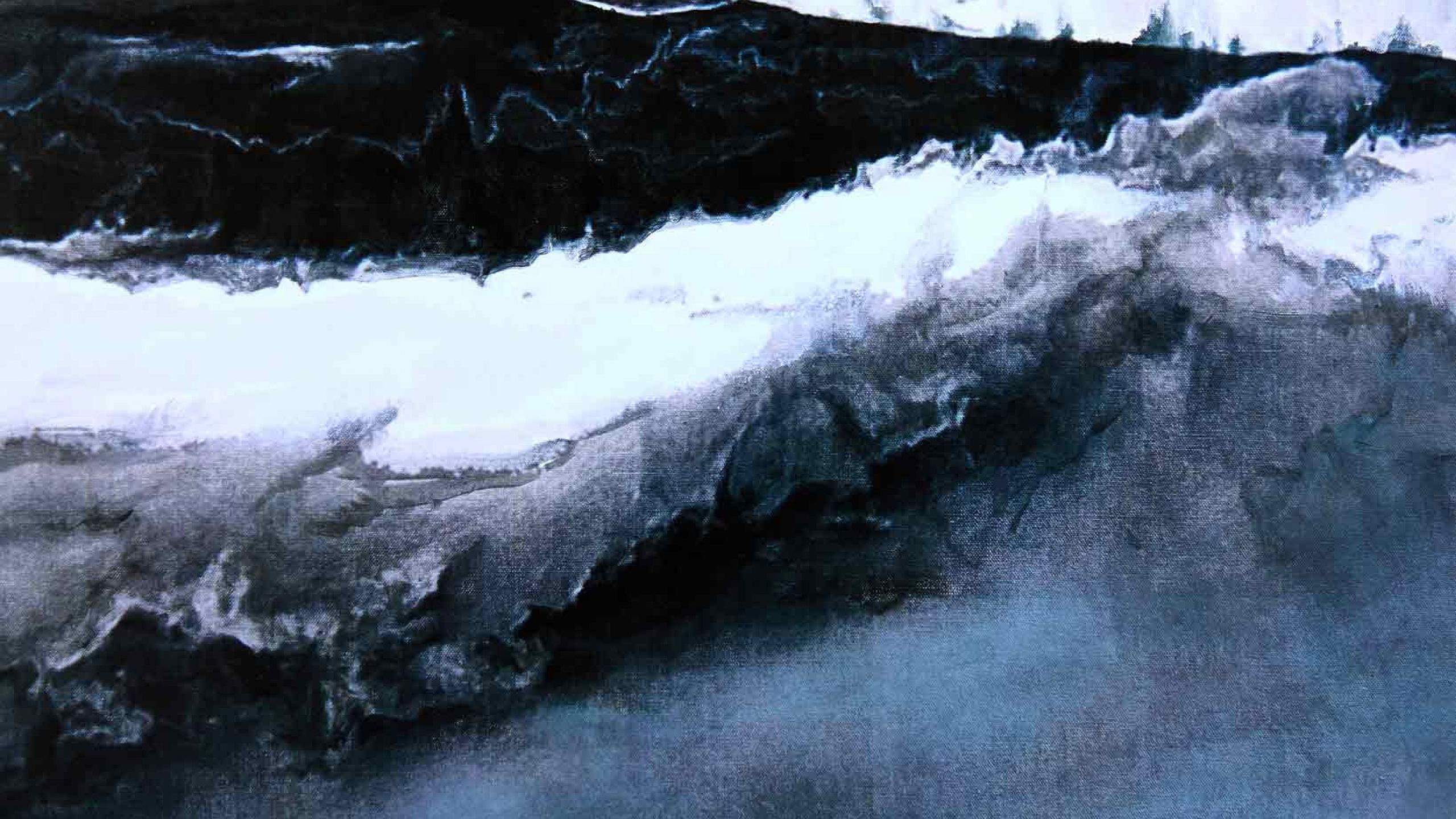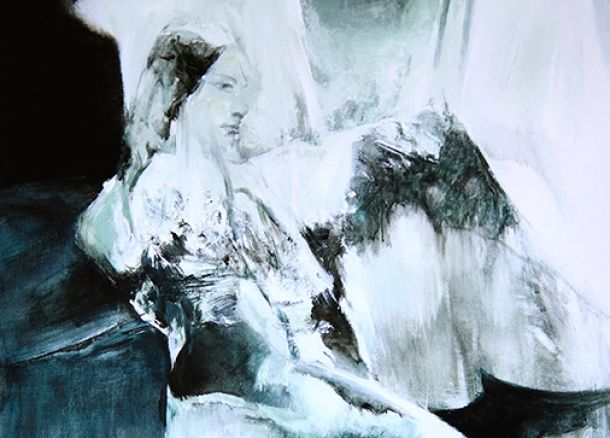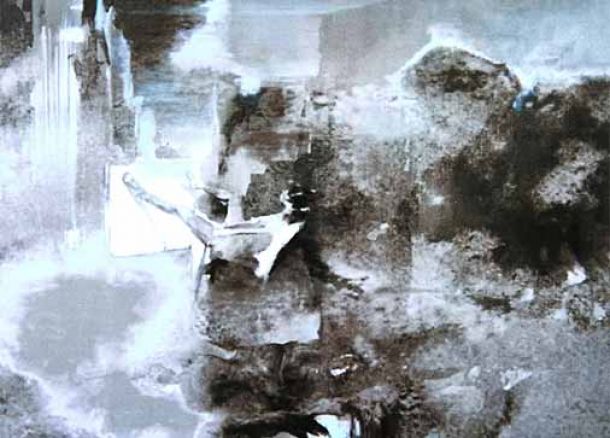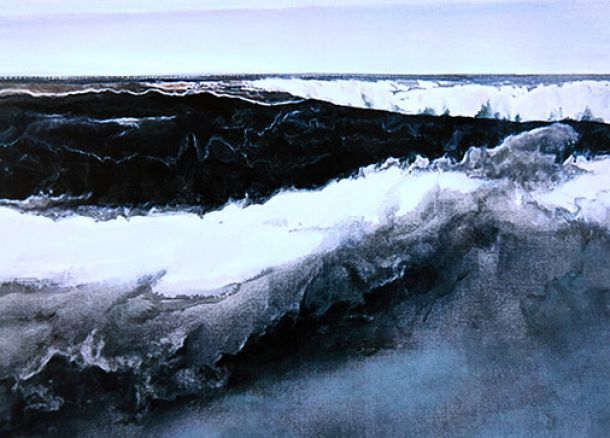I’m a colleague of Professor Yu and his office is upstairs of mine. I had known him as a master of wash paintings long before we got acquainted with each other. My formal acquaintance with Professor Yu was at a senior painting seminar hosted by him on the latest trends of contemporary art in Tsinghua Academy of Art and Design. I was off from works by then and joined the lecture, sitting at the last row of the classroom. My curiosity was aroused as I found the lecture comprehensive and insightful. Yet what impressed me the most was his views on the popular term “concept”. Traditional theorists believed that the concept marked the end of art while contemporary artists regards the concept as the core of art. Yu had a critical remark on these seemingly paradoxical opinions. The topics of the lecture ranged widely from artistic theories to the artist’s due state during painting. There are few Chinese artists who are both well acquainted with theories and well accomplished in artistic practice, while Yu is one of them.
I’ve paid several visits to Yu’s studio during my leisure to discuss artistic questions with him. I was also honored to watch his various painting collections, the representational and the abstract, the traditional and the modern as well as his works of different periods. My impression of him was refreshed by his excellent paintings apart from his enlightening lecture. Yu still employed quite a lot leisure time painting despite his tight working schedules, among all of his art works the time-consuming wash paintings being the most distinctive.
In the current context, prejudice against contemporary art such as the ignorance of installation art is considered out of fashion. It was a rare quality of Yu that he stuck to his original artistic ideals against the value of materialism and money worshiping. His persistence in wash painting meant much more than the art work itself and became a symbol of his style.
Technically speaking, Professor Yu’s wash painting belonged to a new artistic style which is different from the traditional one concerning the unity of form and spirit. What Yu inherited from Chinese art tradition was its aesthetic value rather than the painting techniques. On the basis of Chinese culture, he drew lessons from western art and contemporary artistic trends, establishing a unique style of his own with broader extensions of wash paintings in the multicultural context.
Yu’s wash painting was not confined into Chinese tradition of depicting specific objects and scenes but a rather abstract one.
Yet different from the bold and casual style of western art, his painting had an mysterious air with its light colors and special craftsmanship in details. Though well acquainted with China’s art traditions, Yu employed no typical Chinese images or styles in his works; rather, he applied Chinese aesthetic values in his works–like leaving something unexpressed for imagination–to create a clear and dreamlike atmosphere. Yu also mastered a profound knowledge of western art history and craftsmanship during his cause of education, yet his work was not after the fashion of western realism or any other contemporary artistic trends. Instead, he combined elements from varied cultures in his works, Chinese mildness and elegance with western vividness and boldness, the abstract and the representational, the simple and the complicated. However, Yu didn’t mix those elements intentionally during the course of painting; what he did was simply recording his real momentary feelings.
Yu did a lot of researches and practices on painting. One of his pioneering attempts was employing certain oil painting techniques in wash painting. The thick oil paint and the fluid ink on the same paper creates a hazy yet limpid atmosphere. Whether following tradition or making bold attempts, Yu stuck to the freehand brushwork as his way of expression. He preferred to combine the poetic ambiguity with the obscure three-dimension space so as to cultivate a sense of complexity in his paintings. His work was so abstract and conceptional that it couldn’t be judged by the traditional idea of “beautiful” or “ugly”. Yu created an rhythmical, imaginative and dreamlike world in the painting through original arrangements of the fluid ink, the flowing lines, the shades and the contrast of black and white, which made his works so distinctive.
Yu’s accomplishment attributed to his artistic sensitivity and talent thanks to his knowledge of theories and craftsmanship. A good master of theories was the basic requirement of all the artists, so is the thorough understanding of the classic works of various ages home and abroad. Only through the comparisons and contrasts of various classical artworks could we acquire the basic aesthetic values. The insightful understanding of theories provided Yu with distinctive perspectives in painting. Under the guidance of academic approaches, Yu’s paintings were artistically matured. He had a sense of “trans-boundary” as he transcended the temporal and special limitation and the bounds among different artistic trends, making every concept and style at his master.
In his wash paintings, Yu never gave the realistic depiction of life nor sang a high song of it; instead, his works were characterized by contemporaneity, abstractness and a literati-painting-like aestheticism. It was a daring attempt that completely abandoned traditional artistic concepts, extensions techniques as well as styles. A new fashion of wash painting has come into being, the essence of which is the artist’s aesthetic ideals and spiritual pursuits.
Raymond Loewy believed that simplicity is the decisive factor in aesthetic equation. Yu’s painting was basically in soft tones: blue and gray made the picture limpid and peaceful, while black and white created a lighter frame for the picture.
The painting was clearly structured as there were no complicate plots or relationships between the sights and characters, nor any dramatic facial expressions. Every scene was in an air of tranquility, the audience was as if amid the gentle breeze and mild rain. The tranquil scene also cultivated a sense of mystery, while sharply contrasting colors created a strong visual impact. The simple, plain, unaffected and composed styles of the painting were the genuine reflection of Professor Yu’s rare qualities. I’m sure that he will make greater artistic accomplishments in the near future.

A male lecturer born in October 1962, currently teaching at the Academy of Arts & Design at Tsinghua University.



